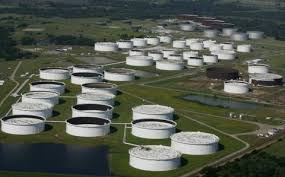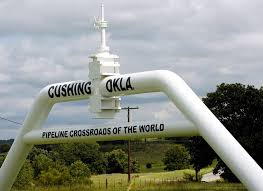
While the massive Cushing crude tank farm has been a source of pride in Oklahoma, now there is talk that it might soon be drained of most of the crude it stores.
Thanks to U.S. production that is straining pipeline and storage capacity, companies are spending millions in the construction of new pipelines to move the oil directly to Houston and other Gulf Coast ports. Readers of OK Energy Today know how one new pipeline after another has been or is being built carrying vast amounts of oil out of the Permian Basin directly to refineries and ports near Houston.
As Reuters reported recently, it could mean some of the 300 tanks in a 9-square mile area at Cushing would “soon drain to levels near effectively empty, even as U.S. oil production soars past a new record of 10.4 million barrels per day.”
The wire service went so far as to state, “The declining volumes stored at Cushing reflects a more permanent shift, underscoring the hub’s waning influence as the primary measuring stick for the U.S. oil market and the leading barometer of future supply, demand and prices.”

Inventories in Cushing fell in early March to 28.2 million which is the lowest market in more than three years. Analysts say when it comes to 20 million barrels…..well, it’s effectively empty. Tank design requires a minimum volume of crude be kept to maintain the physical integrity of the complex. It also allows the blending of different crude grades to comply with pipeline specifications.
The Cushing tank farm has been around since the 1920s and in 1983 became the delivery point for West Texas Intermediate futures. Because the U.S,. banned exports at the time, Cushing became key for traders to gauge domestic supply trends.
But now that Houston is becoming more of an oil center than Cushing, prices are even affected. The price of trades in Houston is becoming more important.






